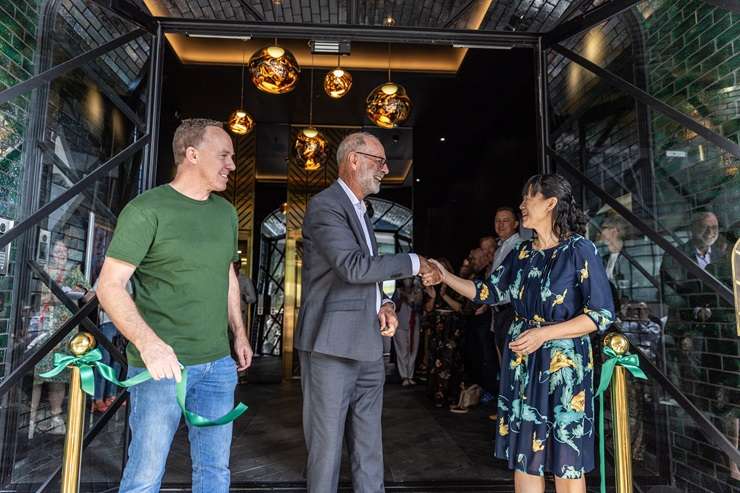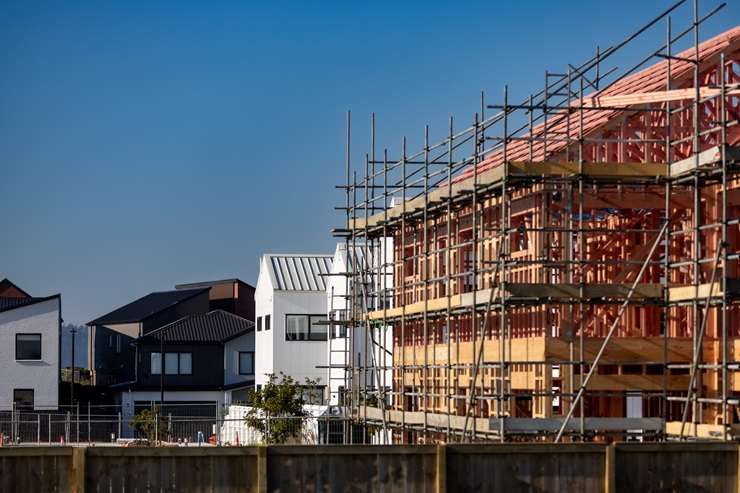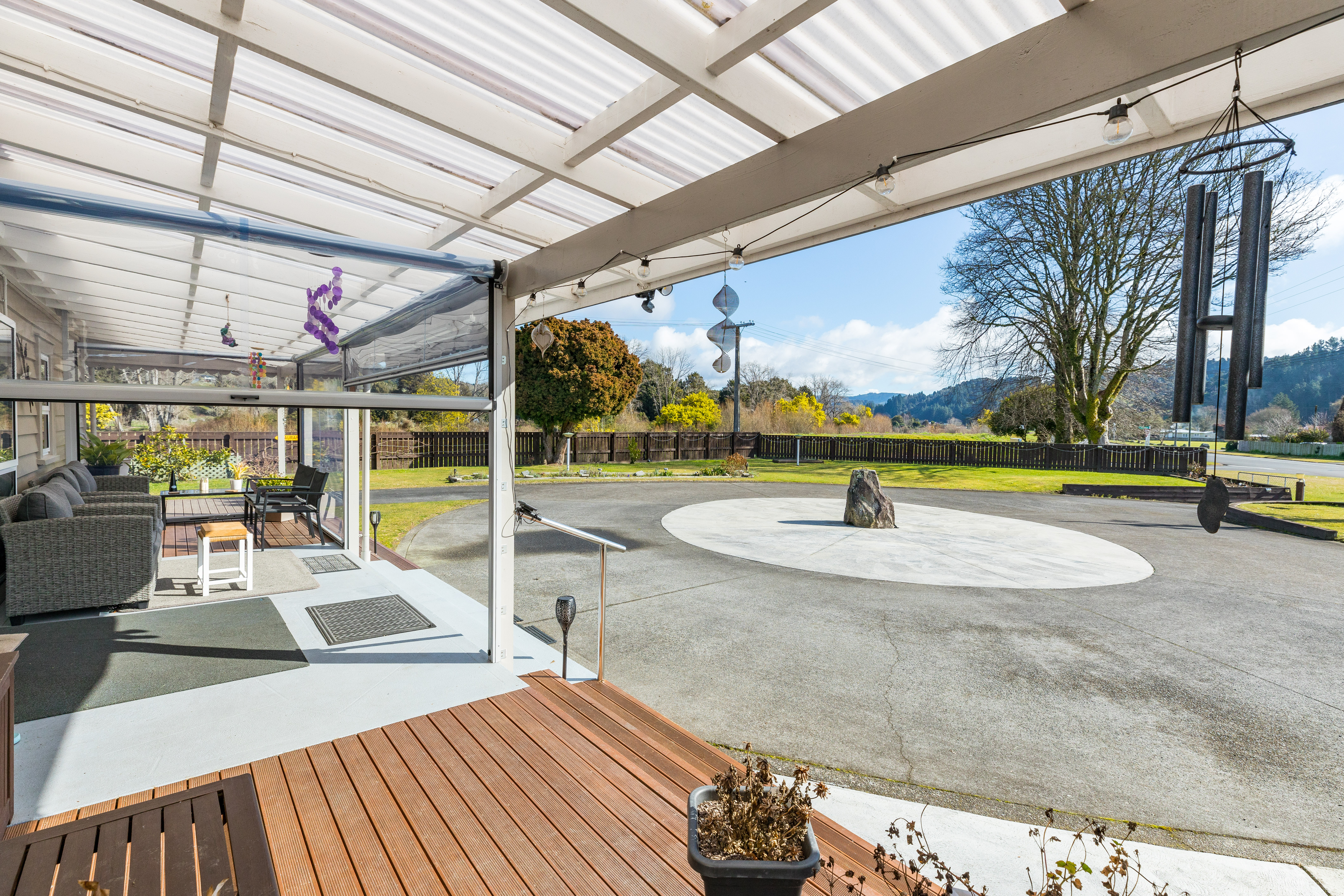High-profile developer Mark Todd gave voice to his frustrations with central and local government at the New Zealand Green Building Council’s housing summit earlier this month. OneRoof asked the driving force behind Ockham Residential to expand on those thoughts in a follow-up interview.
Todd is adamant that Auckland needs to build up, not out, and blames the Medium Density Residential Standards (MDRS) for ruining New Zealand cities. He’s also forthright about the Building Code (a “clusterf***”) and lays into government and other public sector bodies for hampering good development.
Q: You’ve been extremely critical of planning rules, especially the MDRS. Why?
Todd: The MDRS have been a disaster, particularly in Auckland. They've created a disincentive to build high-quality affordable housing. It can take six to nine months or more to get resource consent for apartment projects. For example, the resource consent for my Koa Flats project [in Meadowbank] which provided 14 one- and two-bedroom apartments at an affordable price, took eight months to issue. Meanwhile, terraced-housing developers get a free pass to skip the resource consent process and build three $2m townhouses on a single section. This is nuts. It is not best-practice use of urban land that creates quality compact cities. It only creates expensive housing.
Start your property search
The MDRS came out of nowhere. It was a bipartisan thing from Labour and National. Basically, it's a shortcut for poor use of high-value urban land. I feel very strongly about it. It would be better legislation if it just said, ‘We don't care whether it's three townhouses or 14 apartments.’ If they did that, then I’d have no problem with it.
Q: What impact have the current planning rules had on housing in Auckland?
Todd: We've got a scourge of low-quality terraced housing, even in high-quality areas. There's no community, no on-site amenity. It's not best practice urban living, and it's destroying hundreds of high-value sites that should be developed à la Koa Flats. It also creates high price points. That's what happens when you open the back door to the lowest common denominator. You're going to get overpriced, low-value housing. The reason it's not selling is that the market doesn't see it as good value for money.
Discover more:
- Cooks Beach baches for under $1m - entry-level holiday homes dropping in price
- Shortland Street star: 'I'm a single, fabulous woman - I no longer need this mansion'
- 'Sour taste': Elderly woman sells home for $1.01m after losing $1.65m in failed deal
Q: You’ve also been vocal about the building code being the issue in Auckland, not the Resource Management Act (RMA). What are your specific concerns?
Todd: There's a common theme in the media that the RMA is at the root of all evil in the property development sector. That’s the least of my issues. The Building Code is the biggest issue for me. I routinely build six- to 10-storey buildings, and the code is an absolute regulation cluster f***.
Q: What part of the building code is most problematic?
Todd: We have no acceptable solutions for buildings above 10 metres. I routinely spend over $500,000 on PS1s [producer design statement] and PS2s for these tall buildings, which is ridiculous. Millions of dollars of costs on large buildings are just eaten up by consultants arguing over design parameters that should be acceptable solutions. Anything above 10 metres is entirely bespoke and drives up costs and delays. It creates gross cost inefficiencies that is geared towards intensification and building vertically, as the Auckland Plan encourages.
Q: Why is this happening?
Todd: Once you go over 10 metres, there is nothing in our Building Code that's an acceptable solution. So our timber industries, our concrete industries, MBIE and MHUD, the Ministry of Housing and Urban Development, no one's invested in upgrading our Building Code to include apartment buildings. Everything is bespoke, custom-designed, and there are no standard solutions. Therefore, it's super slow and super expensive.

Todd with Auckland mayor Wayne Brown at the opening of the Greenhouse apartment development in Ponsonby. Photo / Michael Craig
With something like The Greenhouse [apartments], it's millions and millions of dollars of consultants’ costs. I understand why Auckland Council runs a mile from taking any responsibility for any detail. They were burned so badly by the Building Code and the leaky building crisis, and the untreated timber. They've literally written cheques for $1.4 billion, so I'm not bitching at the council. This is a central government issue.
Q: Why do you think this hasn’t been addressed?
Todd: We're still a young, immature country. It’s an own goal and no one’s got their s*** together after the leaky building crisis. All the big players with the money are in the property development sector - they're not builders, they're land developers. They make all the money out of the land. They are always lobbying, up to Cabinet ministers, that housing costs are a supply and demand issue. Everybody thinks about RMA, planning regulation, supply, and demand. The Building Code as it is suits them, because they have no interest in building quality compact cities – they’re in thrall to sprawl – and making the RMA a false bogeyman suits them too. The big players don’t care about building houses. They don’t care about the Building Code because the vast majority of the real profits are in rezoning and putting roads and pipes in. The building of the housing is a little amount made by the group builders at the end of the process. There is no scale in the apartment building industry, and there's no one lobbying, so the New Zealand Building Code’s stuck in the dark ages relative to our ambitions and our actual needs for our cities.
Q: So there’s a disconnect between planning policy and building regulation?
Todd: The Building Code is stuck in the last century. We've got Unitary Plan policy statements trying to drive urban development into this century, with last century's Building Code. So it's just a real clear omission.
Q: What do you think councils could be doing to support developers like yourself?
Todd: Councils could be more proactive in incentivising good decisions. For example, rating incentives are important. We've invested billions in our rail network, which has created high-amenity train stations. I think it's fair to rate low-value industrial or commercial units surrounding these stations out of ownership. Just rate them so that their existing low-value uses are no longer economically viable. If we, as a community and a country, paid for the CRL rail networks that have created these high-value nodes, I think the Crown and the council have every right to demand development around those high-density, high-value nodes

One of the new CRL stations in inner-city Auckland. Todd says the project is an opportunity to revalue land around train stations. Photo / Supplied
Q: How would you implement that?
Todd: I would rank the train stations from 1 through 12. And you just rate it so that you can't hold a low-rise commercial building next to a train station. It wouldn't be economically viable. When it's sold, it will only be sold to a developer who has to develop in line with the Auckland Plan. The council might want a mixture of retail and hospitality. Because the biggest problem is that we don't have enough people living in our urban nodes and the CBD.
Q: At the housing summit, you mentioned the issue of connection charges for water and power. Can you elaborate?
Todd: I routinely spend between 5% and 8% of my construction budget just to turn on water and power. It's unbelievable how much it drives up the price of an apartment. I think monopoly service providers, particularly water and power companies, should be compelled by legislation to provide free connections in high-priority housing areas – those around transport nodes or high-amenity neighbourhoods. If there's a shortage of water or power, the existing 500,000 houses should be paying for that. Because you can't just say, "I was here first, I'm old." Young people probably deserve to pay a lesser share than older, wealthier people. Why would I be paying $17,000 plus GST for every new apartment to connect to the water?
Q: Is the development environment starting to turn a corner?
Todd: The development sector is in its toughest moment in the 27 years I've been involved in property development. We're entering our fourth year of low sales volume. Everyone's been forecasting a 5% or 6% rise in housing next year, and it never comes. But when you have 50% house-price inflation in 2.5 years, on top of 10 years of quite strong growth after the GFC, that’s not sustainable. House prices have become decoupled from incomes. It will take a long time for that gap to close incrementally.

Townhouses under construction in Auckland. Todd believes planning rules work against apartment builders. Photo / Michael Craig
Q: What’s holding buyers back?
Todd: The supply and demand thing is not in balance at the moment. People are also fearful. The world's a very uncertain place. They're fearing a recession, they're worried about their jobs, they're fearing instability, and with good reason. International events of this year, 2025, at least left me feeling more unsure about the future than I was 12 months ago. That's why a lot of people are sitting on their hands.
I think the current Government has realised that the last Government's action of shutting New Zealand down to foreign investment across the board was a serious mistake. Where does capital want to flow at the moment? To safe, politically stable countries. New Zealand is ideal. We need to be open to foreign investment.
There's just no way we can pretend we're in Norway with North Sea oil and just a nice little happy place that doesn't need growth. We need twice as many people living here to sustain first-world-standard transport and public infrastructure networks in a country with a land area the size of the UK.
Q: You’re working on a joint venture with iwi at Unitec Carrington land. What are some of the key learnings from that project?
Todd: We've got 11 hectares there, with a master plan for 53 buildings, of which 11 are consented. We've consented 1100 apartments to date. It's been a tough sales environment, but we're committed to building something of real international aspiration here – a stellar example of what high-density housing and community living can be. Ultimately, we want to create a place where families can live, socialise, shop, and thrive in one place.
- Click here to find properties for sale










































































